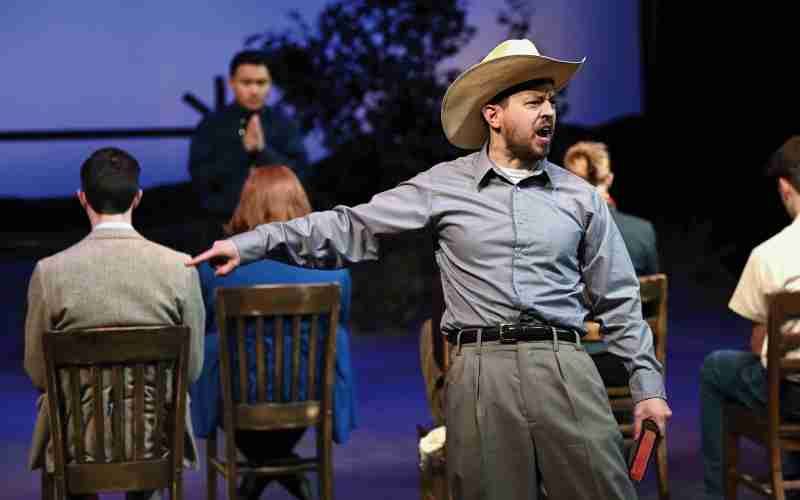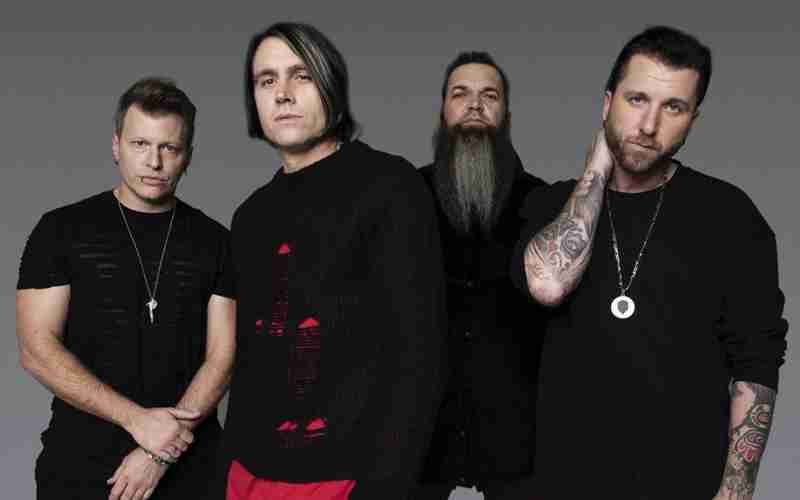In 1999, following the kidnapping, torture, and brutal murder of a 21-year-old gay man Matthew Shepard, New York’s Tectonic Theatre Company traveled to the town of Laramie, Wyoming. They went with the intention of gathering interviews from the citizens of the town in order to create a theater piece surrounding the murder.
The Laramie Project is the result of their efforts. The text of the play is drawn from the journal entries of members of theater company and the transcripts of interviews they conducted with the locals. Cast members seamlessly transition between their observations of the town and the actual words of Laramie residents. In this way, they piece together the tragic events of Shepard’s final night for the audience.
In talking to the citizens of the town, the members of the company were met with a complicated web of reactions. There were a great many in the town who, naturally, expressed grief for the death of the young man. Others, specifically Laramie’s queer citizens, expressed fear and anger. But narratively, the most fascinating content comes from those accounts peppered with justifications, blame shifting, and attempts to downplay the horrible situation. These moments in the play, and I won’t spoil where they arise, are some of the most challenging and important scenes. They force us to ask the questions, “Does society ever really face its problems, or does it just pay lip service?”
The tremendous strength of this play is how it simply presents the facts “correctly” as one of the interviewees urges the company members to do. By doing this, the viewer is left to react on their own to each individual scene and character, taking their own journey to understand the unimaginable cruelty of the event.
Every aspect of this production came together to deliver a powerful portrayal of the events surrounding Shepard’s murder. Corey Lee’s lighting design perfectly mimics the Wyoming sky and Robert Shoquist’s simple, effective set allows us to follow our narrators to every part of the town of Laramie. Their combined work drives home the juxtaposition of the beauty of the western United States with the ugliness of the situation that brings us to Laramie in the first place. Sound design by Anthony Krick further serves that goal. Austin Rausch’s thoughtful and effective costuming gives the actors all they need to transform from character to character seamlessly.
The versatility and attention to detail on the part of the actors should not go unrecognized. Each of the company of actors plays multiple roles. It was apparent that every cast member developed a unique and fully believable physical, vocal, and emotional profile for each role they played. This is a feat not easily accomplished. It requires a laser focus and tenacity on the part of both the actor and the director. Every actor in the show had to fully embody characters whose thoughts and statements ranged from naive to disgusting. They accomplished this with such earnestness and truth that the audience is left feeling as though they have followed the company members to Laramie.
Director John O’Connell has masterfully led his designers and cast in this moving docudrama. He has made certain that the gravitas of the situation and the human truths revealed in text do not get lost in performance.
The Laramie Project is a play that, sadly, continues to be relevant nearly 25 years after the events that first gave it life. There are those who might say we can lay it to rest, that it is a relic of less enlightened time. They are wrong. The reality is we are still in those times. The cruelty that spawned the brutal torture and murder of Matthew Shephard in 1998 is still with us. According to the Department of Justice website, the most recent sentencing for a hate crime based on sexual orientation occurred on June 24, 2021.
The Laramie Project continues its run Nov. 18, 19, and 20 at 8 p.m. in the Williams Theatre on the Purdue Fort Wayne campus.
 Submit Your Event
Submit Your Event



